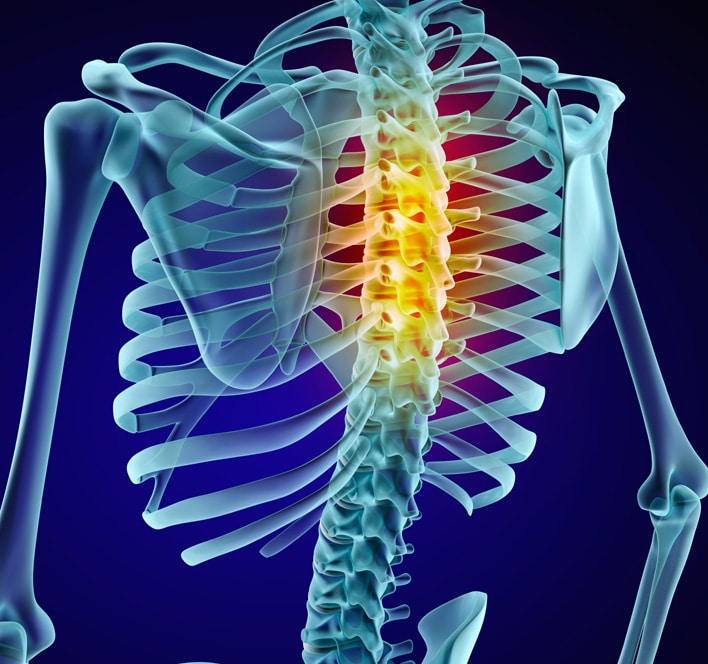You have small nerves called medial branch nerves that stem out from your spinal facet joints and deliver pain signals to your brain from your facet joints. These can become inflamed for a number of reasons, such as a chronic condition or an injury. With lumbar facet joint pain, lower back achiness may be alleviated with a medial branch block.
Cervical facet joint pain can often lead to soreness in the arms, neck, or shoulders. As part of your healthcare plan, your doctor may recommend you see a spine and back specialist to have a medial branch block. This procedure can be performed in either the lumbar or cervical portion of your spine, depending on where your discomfort is coming from. Our team at NJ Spine & Orthopedic can evaluate your medical records and help determine the best course of treatment for your symptoms.
What Is a Medial Branch Block?
This is a type of spine injection that helps to block medial nerve pain signals temporarily. Your medial nerves pass through your facet joints. These joints that are located in your spine enable vertebrae movement.
A medial branch block might be one of a few different tests your doctor suggests in order to find the source of your back pain. To reduce inflammation, they may give you a cortisone steroid in this injection.
Medial branch blocks aren’t the same as facet blocks, as these injections are administered outside your joint near your medial nerve. Since sciatica can be the result of facet joint degeneration, which breaks down joint cartilage, a medial branch block might also be used by doctors to identify sciatic pain.
What to Expect With a Medial Branch Block
Medial branch blocks can offer temporary relief from pain, but they are mostly diagnostic tools to help spine doctors determine the cause of a patient’s back pain and what the treatment plan will look like. With a medial branch block, you should expect one of the following to occur:
- You experience pain relief after the block that lasts for a few days. If a steroid was included in your injection to decrease inflammation, you might experience longer relief. This is a signal that you might benefit from further facet joint area and medial nerve treatment. If it’s successful, the spine and back doctor may recommend you also have an ablative nerve block.
- You experience pain relief for a few hours but it returns. This means the pain in your back is probably from facet joint issues and your spine doctor might suggest additional treatment in this area.
- You experience no pain relief. There is a chance the procedure won’t work at all. This is a signal your back pain wasn’t due to facet joint issues.
You need to already have transportation arrangements made for after your procedure. It’s not safe for you to drive. You’ll likely be able to resume your regular activities after a day or so of your injection, but you’ll still want to take precautions. You shouldn’t take a shower, bath, or otherwise get wet during the first 24 hours after your procedure. You should also avoid heat of any type in the area as well.
Learn More About Medial Branch Block Injections at NJ Spine & Orthopedic Today
The back and spine professionals at NJ Spine & Orthopedic are experts in medial branch block administration. We can pinpoint the exact source of your inflammation and pain accurately with this advanced diagnostic procedure. This allows us to tailor an individualized long-term treatment plan for you.
If you’d like to learn more about whether or not you’re an ideal candidate for a medial branch block for your pain, you can reach out to our experienced spine and back surgeons at NJ Spine & Orthopedic. Call us at (866) 553-0612 today or fill out our online form to schedule an appointment. Our Concierge Team can also help streamline your treatment appointments.

